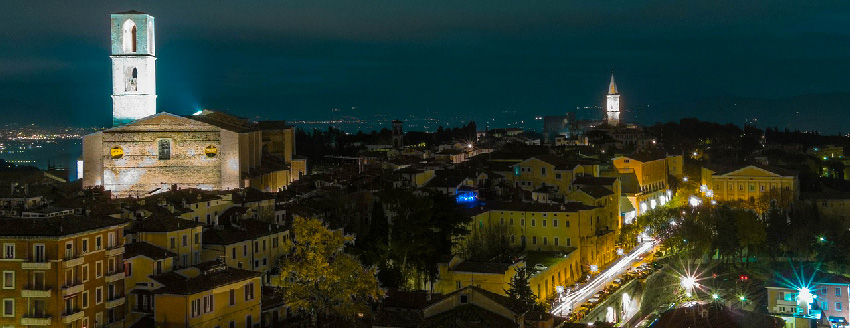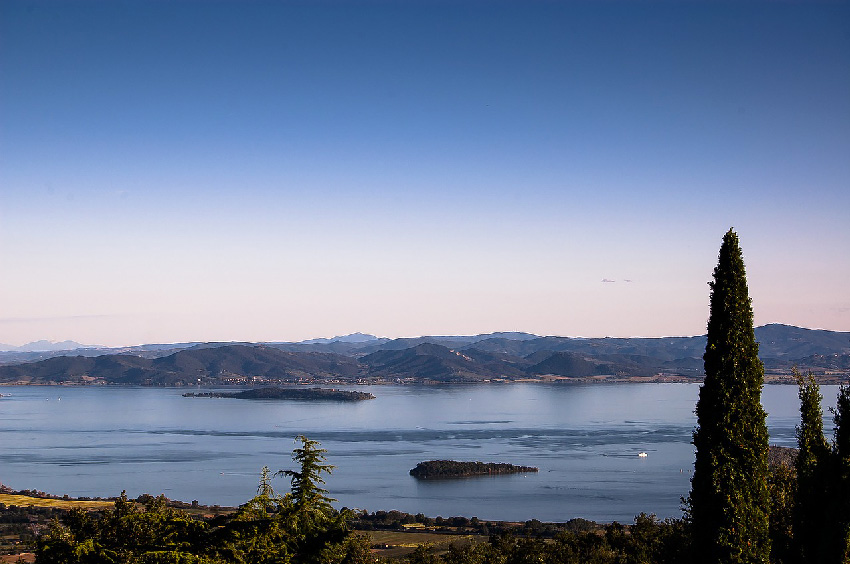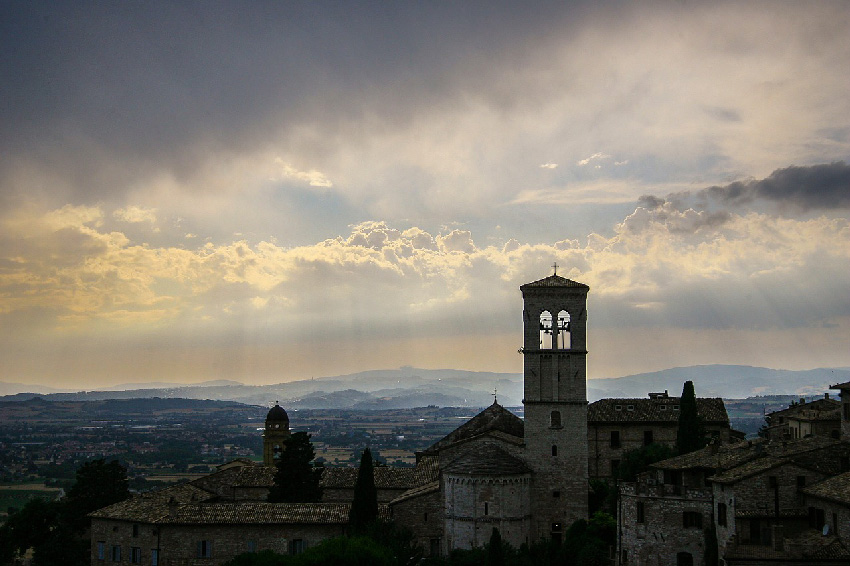The green heart of Italy is Umbria. A region that keeps Italy’s old-world traditions alive. Everywhere you can find traces of Etruscans, Romans, Ostrogoths, Byzantines and medieval feuding families. Aside from these outside influences, Umbria it is one of the most authentic regions of Italian peninsula.
The territory is characterized by its hills, mountains, valleys and historical towns. And not to be forgotten, it is just a few kilometers from Tuscany to the west, Marche to the east and Lazio to the south. A strategic starting point for your Italian tour.
Last but not least, in Umbria you will find a variety of foodie hotspots to explore. And as you know, Italy never jokes about when it comes to food or wine! Historically, Umbria has been overshadowed by its more famous neighbor, Tuscany. Now the world (probably also thanks to its wine culture) is discovering this very attractive and lesser-known region.

Perugia by night
Umbria: lakes, towns and enogastronomy
Perugia, Spoleto, Orvieto, Assisi, Gubbio, Lake Trasimeno, Marmore waterfalls and many more little beautiful towns and attractions are a perfect excuse to plan a trip to this region of central Italy.
Perugia is the capital city and is well known for its university – founded in 1308 – and its cultural and artistic activities. Eurochocolate Festival (October), the Umbria Jazz Festival (July) are just two of the biggest events hosted by the city. Secular buildings and ancient churches will satisfy also the travelers most hard to please.
Lake Trasimeno is the fourth lake for surface area in Italy and is located in the province of Perugia. It is surrounded by hills rich in olives and vineyards. Castles are all around Trasimeno and the lake offers beautiful views. Perfect for taking stunning sunset photographies.

Lake Trasimeno
Orvieto is in southwestern Umbria. It is populated since the Etruscan times. The monumental medieval Cathedral of Orvieto is striking and together with San Giovenale, built in 1004, San Domenico (one of the first Dominican churches) and San Francesco (1266) is one of the best attractions of the town. No to miss The Pozzo di San Patrizio, a historic well.
Assisi is another ancient dream town. The Basilica of San Francesco d’Assisi alone is worth the visit. In fact, Assisi was the birthplace of St. Francis, founder of the Franciscan religious order. Two medieval castles, a Roman amphitheater, various ancient remains and a rich tradition of art makes Assisi one of the most visited places of Umbria.

The other towns mentioned are worth visiting. Gubbio and its medieval aspect, Spoleto with its music and opera Festival of the Two Worlds and also other small towns and villages. The last thing we want to suggest is Marmore’s Falls. It is an artificial, man-made waterfall that dates back to the Roman era.
Wines of Umbria
History, landscapes, traditions. But also delectable Italian wines and sumptuous regional cuisine. Umbria is an ideal destination for gourmands.
Some of the most amazing and maybe most undervalued Italian wines come from Umbria. Vines grow in every part of the territory, with many DOC (denominazione di origine controllata) and DOCG wines spread between the different towns.
Common grapes are Sagrantino, Sangiovese, Trebbiano, Grechetto, Drupeggio, Verdello, Canaiolo, Ciliegiolo and also Cabernet Sauvignon. Umbrian wines become more and more known and respected on the world scene.

Winemaking can be traced back to the Benedictine monks, the first to plant vineyards over the region. And most of the best local wines are made from grapes cultivated in the beautiful terraced vineyards all long the hillsides (take a look at the featured cover image).
Read also: How to taste Italian wine

